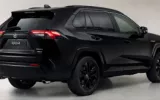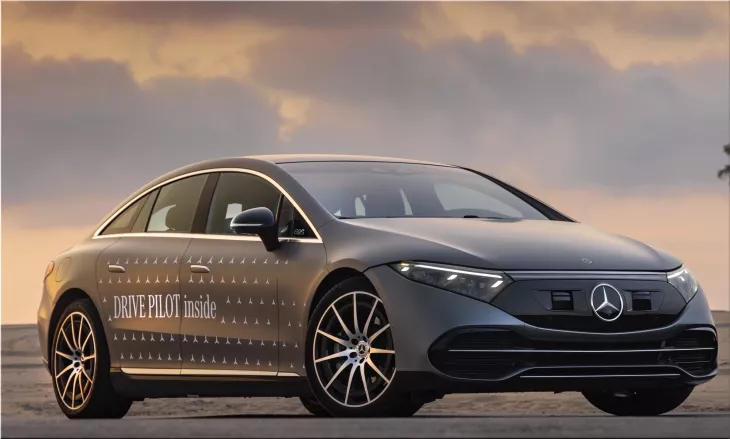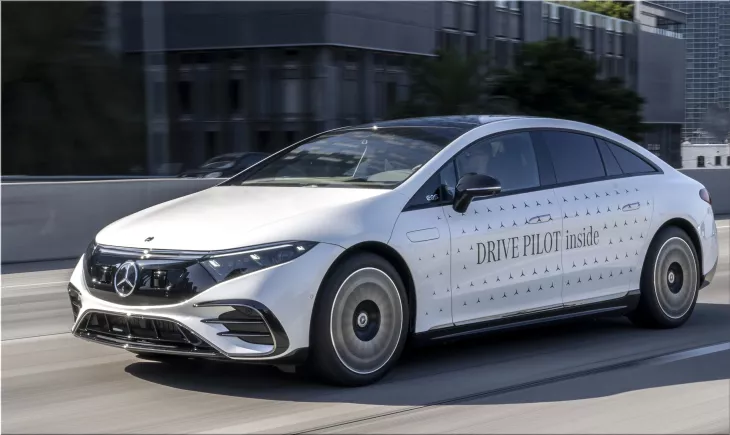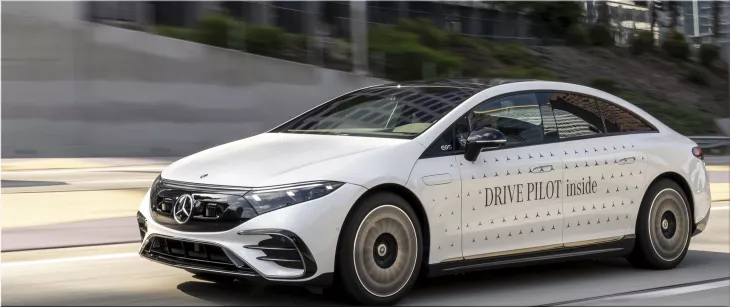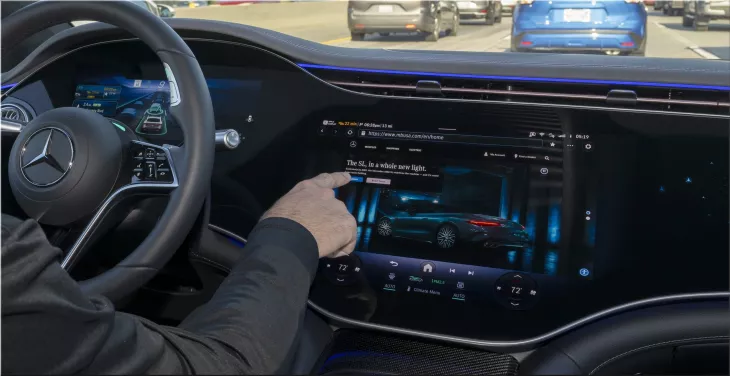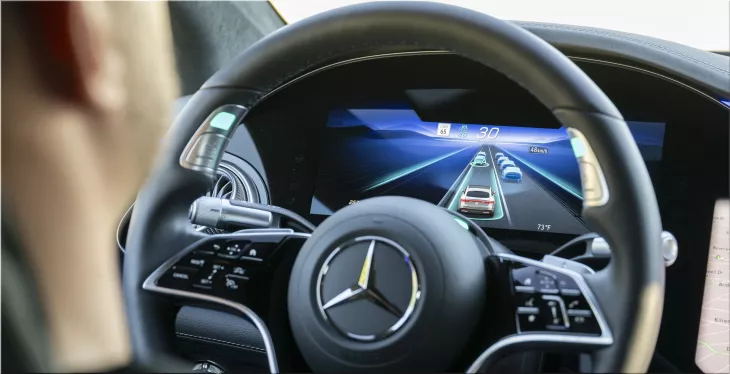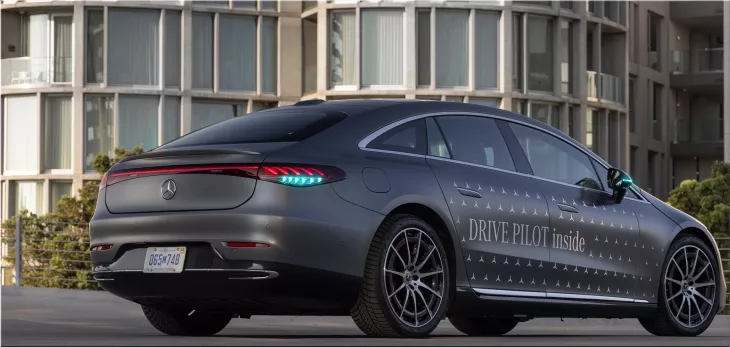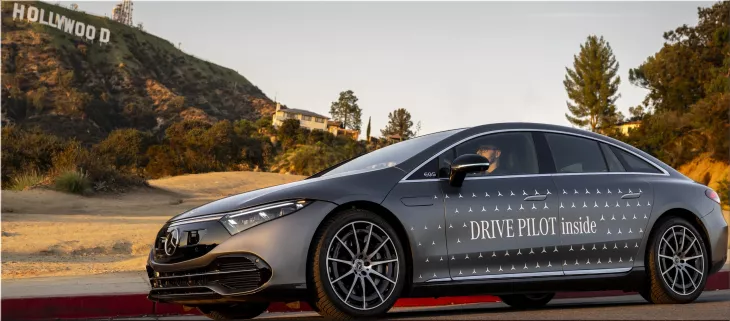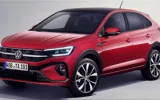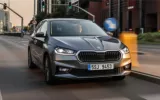Mercedes-Benz is a pioneer in automotive innovation and safety, and it has once again proven its leadership by bringing the world’s first certified SAE Level 3 system for the U.S. market to its customers. The DRIVE PILOT system is a revolutionary feature that allows drivers to take their eyes off the road and their hands off the wheel in certain conditions while the car takes over the driving task.
What is SAE Level 3, and why is it important?
According to the Society of Automotive Engineers (SAE), there are six levels of automation for vehicles, ranging from Level 0 (no automation) to Level 5 (full automation). Most of the current driver assistance systems on the market are classified as Level 2, which means that they can assist the driver with steering, braking, or accelerating. Still, the driver must always monitor the environment and be ready to intervene at any time.
Level 3, on the other hand, is a significant leap forward, as it means that the system can handle all aspects of driving in a specific scenario, such as highway traffic or urban congestion, and the driver can divert their attention to other activities, such as watching a movie or reading a book. However, the driver must still be present and able to resume control when prompted by the system or when the conditions change.
Level 3 systems are not easy to develop or certify, as they require advanced sensors, software, computing power, and rigorous testing and validation. They also pose legal and ethical challenges as they shift some of the responsibility and liability from the driver to the manufacturer. That’s why Mercedes-Benz is the first and only automotive company to have achieved this milestone in the U.S. after obtaining approval from Nevada and California authorities.
How does DRIVE PILOT work, and what are its benefits?
Mercedes-Benz DRIVE PILOT is an optional feature that will be available on the 2024 Mercedes-Benz EQS sedan and S-class models in late 2023. It will cost $2,500 per year as a subscription service. DRIVE PILOT can be activated by pressing a button on the steering wheel when certain criteria are met, such as:
- The vehicle is on a mapped highway
- The traffic speed is below 40 mph
- The weather is clear and dry
- The daylight is sufficient
When DRIVE PILOT is engaged, the driver can relax and enjoy the ride, while the system monitors the road ahead and behind, using cameras, radars, lidars, and GPS. The system can steer, accelerate, brake, change lanes, and maintain a safe distance from other vehicles. It can also communicate with other road users using signals and sounds.
The system will alert the driver to resume control when necessary, such as when:
- The traffic speed exceeds 40 mph
- The weather conditions deteriorate
- The daylight becomes insufficient
- An emergency vehicle approaches
- A pedestrian or an obstacle is detected
- The highway ends or splits
The driver will have about 10 seconds to respond to the alert and take over the wheel. If the driver fails to do so, the system will bring the vehicle to a safe stop on the shoulder or in the emergency lane and call for assistance.
Mercedes-Benz DRIVE PILOT offers several benefits for drivers and passengers, such as:
- Increased comfort and convenience: Drivers can use their time more productively or enjoyably while traveling in traffic.
- Reduced stress and fatigue: Drivers can avoid the mental and physical strain of driving in monotonous or challenging situations.
- Enhanced safety and efficiency: The system can react faster and more accurately than human drivers, avoiding collisions and optimizing fuel consumption.
What are some of the challenges and limitations of DRIVE PILOT?
DRIVE PILOT is a groundbreaking technology that represents a major step toward autonomous driving, but it is not perfect or flawless. It has some challenges and limitations that drivers should be aware of, such as:
- Legal and regulatory uncertainty: The laws and regulations regarding Level 3 systems vary from state to state and may change over time. Drivers should check their local rules before using DRIVE PILOT.
- Ethical and social implications: The use of Level 3 systems raises some ethical and social questions, such as who is responsible for accidents or injuries involving automated vehicles, how to ensure data privacy and security, and how to balance human and machine decision-making.
- Technical and operational constraints: The performance and reliability of Level 3 systems depend on many factors, such as sensor quality, software updates, network connectivity, road infrastructure, traffic conditions, weather conditions, human behavior, etc. Drivers should always be prepared to intervene if needed.
What are some of the future prospects of DRIVE PILOT?
DRIVE PILOT is not the end goal of Mercedes-Benz’s vision for automated driving. It is rather a stepping stone toward higher levels of automation and intelligence. Mercedes-Benz is continuously working on improving and expanding its DRIVE PILOT system, as well as developing new features and functions for its customers. Some of the future prospects of DRIVE PILOT include:
- Increasing the speed limit and the range of scenarios where the system can operate
- Integrating the system with other mobility services and platforms, such as car-sharing, ride-hailing, parking, charging, etc.
- Enabling the system to learn from its own experience and from other vehicles, using artificial intelligence and cloud computing
- Achieving Level 4 and Level 5 automation, where the driver can be completely absent or irrelevant
Conclusion
DRIVE PILOT is a revolutionary feature that sets Mercedes-Benz apart from its competitors and demonstrates its leadership in automotive innovation and safety. It is the first certified SAE Level 3 system for the U.S. market, which allows drivers to take their eyes off the road and their hands off the wheel in certain conditions while the car takes over the driving task. Mercedes-Benz DRIVE PILOT offers several benefits for drivers and passengers, such as increased comfort, reduced stress, enhanced safety, and improved efficiency. However, it also has some challenges and limitations that drivers should be aware of, such as legal and regulatory uncertainty, ethical and social implications, and technical and operational constraints. DRIVE PILOT is not the end goal of Mercedes-Benz’s vision for automated driving. It is rather a stepping stone toward higher levels of automation and intelligence. Mercedes-Benz is continuously working on improving and expanding its DRIVE PILOT system and developing new features and functions for its customers.



